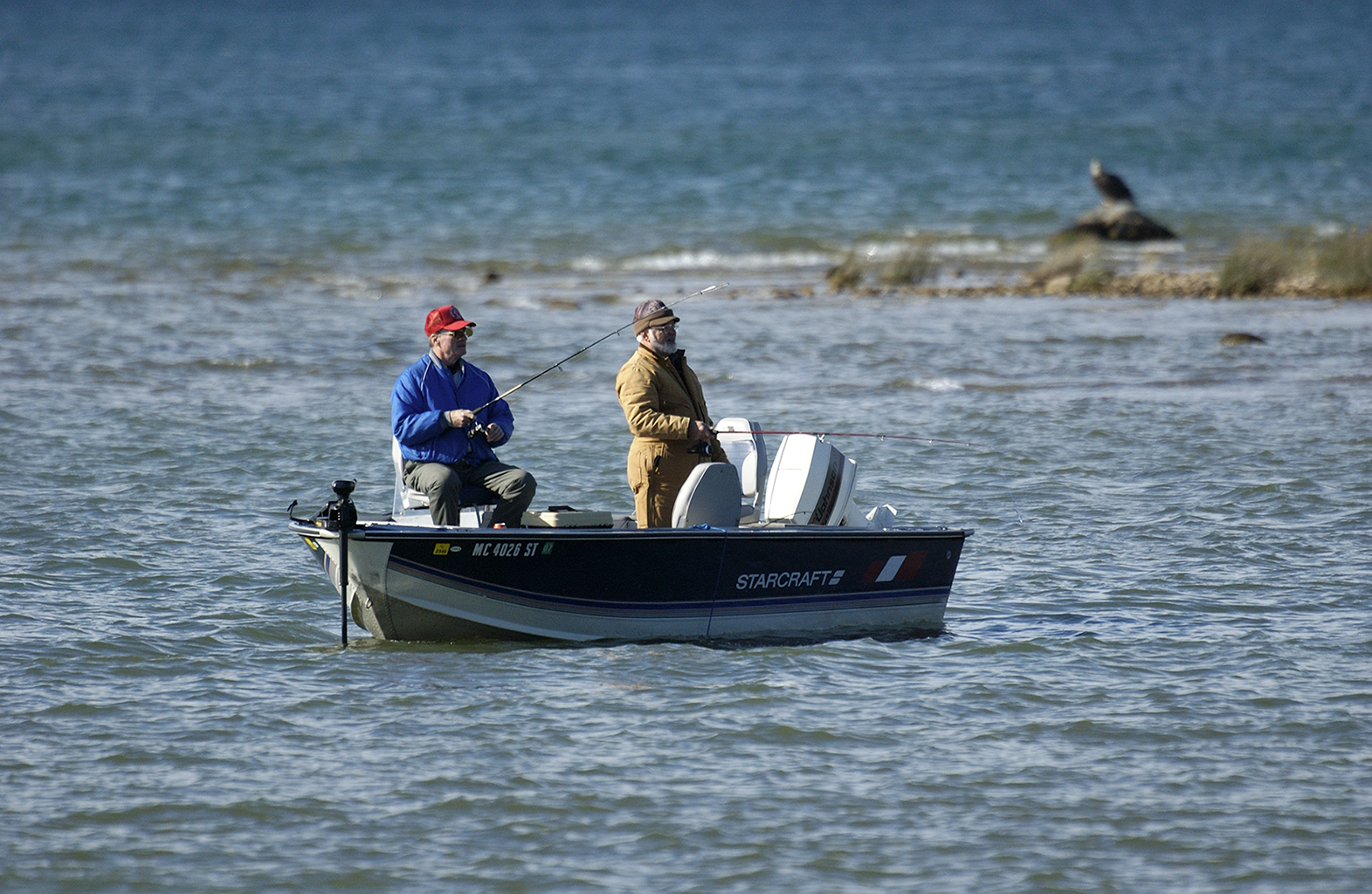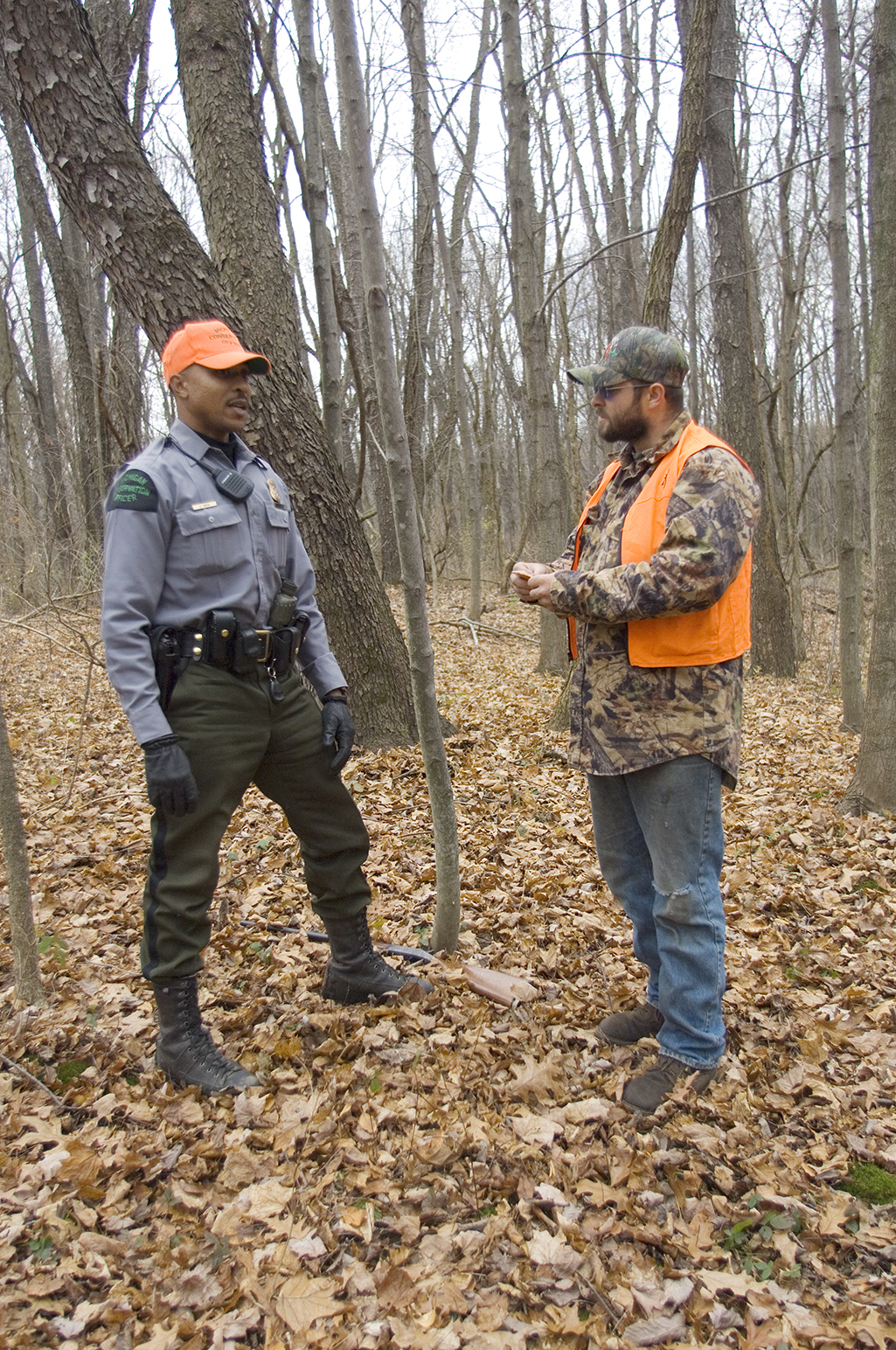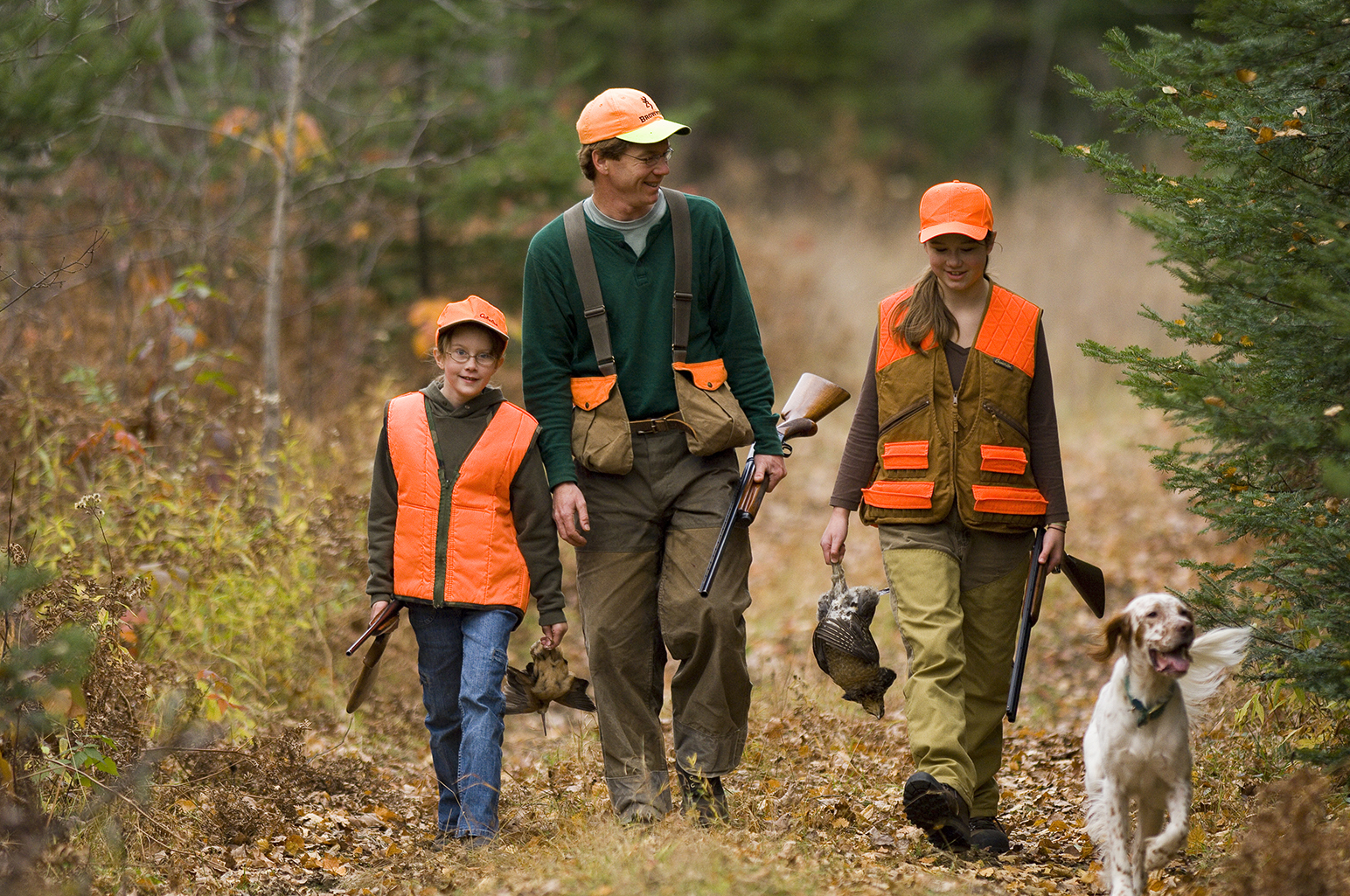Figuring out the DNR’s budget
By BOB GWIZDZ
Michigan Department of Natural Resources
 At first glance, the Michigan Department of Natural Resources’ budget of almost $409 million this fiscal year is enough to make a taxpayer blanch. At first glance, the Michigan Department of Natural Resources’ budget of almost $409 million this fiscal year is enough to make a taxpayer blanch.
However, many Michigan taxpayers may not know that only 14 percent of the DNR’s current budget is financed by state taxes.
Of the state’s $56.7 billion overall budget, DNR funding is roughly 0.7 percent. From the state’s primary or General Fund budget of $10.2 billion, the DNR receives 0.6 percent. The state’s fiscal year runs from Oct. 1 to Sept. 30.
“For the most part, we are a pay-to-play department,” said Erik Eklund, the DNR’s chief budget officer.
The DNR’s bills are paid from some 60 different funds, all of which have various revenue streams, but many of which are made up of user fees paid by those who hunt, boat, fish, snowmobile, camp, harvest timber, ride off-road vehicles or otherwise take part in natural resources-based activities.
From there, some of the details can get complicated, but it’s worth the effort to gain a better understanding of how the DNR is funded.
Important revenue streams
The single biggest revenue source for the DNR is the Game and Fish Protection Fund, which contributes $83 million, about 20 percent of the overall DNR budget. This fund is made up largely from hunting and fishing license fees.
The fund also receives money from the Game and Fish Protection Trust Fund, which collects royalties from oil, gas and mineral extraction or timber sales on lands acquired with Game and Fish dollars.
The Game and Fish Protection Fund receives $6 million annually, plus whatever interest and earnings the trust fund generates in a year. Last fiscal year, the trust fund showed a balance of $190.4 million.
Federal contributions make up the next-largest component of the DNR budget, about $70 million. Much of that figure comes from federal programs that collect taxes and fees for specific activities and redistribute that money to the states.
In 2017, for instance, the DNR received $24.2 million from the Pittman-Robertson Wildlife Restoration Act, a law passed in 1937 that collects an excise tax on firearms and ammunition. The Dingell-Johnson Sport Fish Restoration Act, which collects taxes on fishing equipment, chipped in $10.7 million to the DNR budget last year.
“The federal funding we receive is absolutely essential,” said Russ Mason, chief of the DNR’s Wildlife Division. “We access that money based on the size of the state and the number of hunters we have here.”
General Fund
State General Fund money, appropriated by the Michigan Legislature, accounts for $56.9 million of the DNR’s budget. Those tax dollars are spent for a variety of purposes.
In this fiscal year’s budget, the largest share of that money ($15.6 million) was allocated for a variety of one-time appropriations, some multi-million-dollar items, like state park infrastructure improvements and development of the Iron Belle Trail, and many smaller appropriations to deal with specific issues, such as swimmer's itch or shooting range construction.
General Fund money also is used to fund operations that are outside the realm of some DNR divisions’ main  charges. charges.
The DNR’s Law Enforcement Division received more than $11 million this year to compensate for conservation officer activities outside of their typical duties, which are game and fish law enforcement, snowmobile and off-road vehicle enforcement, and marine safety.
Michigan conservation officers are fully empowered peace officers who do everything from conducting search and rescue operations to responding to traffic incidents.
“Conservation officers are not just fish and game cops,” Eklund said. “They’re often the first responders in many rural areas in the state.”
Other General Fund appropriations to the DNR this year include $7.6 million to the Forest Resources Division for wildfire protection (much of which takes place on private land), $5 million for invasive species management, $4.7 million for the Michigan History Center and roughly $1 million for the Summer Youth Employment Program, which brings at-risk youth into state parks to teach them job skills as they work on park improvements, such as building picnic tables.
Otherwise, most DNR divisions are funded through user fees.
Users contribute
The DNR’s Parks and Recreation Division has the largest division budget, $94.7 million. It is funded by a variety of revenue sources, such as sales of Recreation Passports, boat registrations, snowmobile trail stickers, off-road vehicle license fees and trail stickers, and camping fees collected at state parks and forest campgrounds.
The DNR also receives 2 percent of the state’s gas tax – 80 percent of which goes to the Waterways Fund, used to operate and maintain harbors and boat launch ramps.
The Parks and Recreation Division also receives money from the Park Endowment Fund, which collects the bulk of royalties from oil, gas and mineral extraction on public land. Every year, 50 percent of the royalties generated and any interest or earnings from the body of the fund are available for spending.
“I am pleased with the strong public support for our great parks and recreation system,” said DNR Parks and Recreation Division Chief Ron Olson. “We depend greatly on user fees, and last year’s growth provided for sustaining our world-class natural resources that allow tremendously diverse outdoor recreational opportunities.”
The DNR’s Forest Resources Division, with a $48.5 million budget, is funded largely by the timber industry, which pays fees when harvesting timber from state forests. The division also receives federal funds from the U.S. Forest Service.
The Wildlife Division’s budget of $42.5 million comes largely from the Game and Fish Protection Fund (mostly hunting license fees) and Pittman-Robertson funds. The division received a little more than $2.6 million in General Fund money this year to combat wildlife diseases, including $1 million in one-time funds for chronic wasting disease.
The Wildlife Division also receives an additional $215,000 in General Fund money for work on Belle Isle ($100,000) and with privately owned facilities for captive deer, elk or other cervids ($115,000).
The DNR Law Enforcement Division’s budget of $42.4 million is made up from 14 sources. The single biggest contributor is the Game and Fish Protection Fund, which chipped in $20.5 million this year, including 35 cents for every hunting and fishing license sold to fund the Report All Poaching hotline. Other funding sources include money collected from ORV license fees and trail stickers and watercraft and snowmobile recreation fees.
The DNR also provides over $40 million in grants through a variety of different programs. Examples include grants for invasive species prevention and control; motorized and non-motorized trail improvements; acquisition and development of public outdoor recreation areas; fish and wildlife habitat improvement; assistance to county sheriffs for ORV, snowmobile and boating law enforcement; and the Summer Youth Employment Program.
The DNR Fisheries Division’s $31.6 million budget is funded largely by the Game and Fish Protection Fund and federal Dingell-Johnson funds, as well as lawsuit settlements from companies involved with resources damages, such as power companies whose hydroelectric plants have caused fish kills.
 Overall, administrative expenses – everything from the Michigan Natural Resources Commission ($77,100) to property management ($3.7 million) – are funded by contributions from the funding sources that finance the DNR’s various divisions. Overall, administrative expenses – everything from the Michigan Natural Resources Commission ($77,100) to property management ($3.7 million) – are funded by contributions from the funding sources that finance the DNR’s various divisions.
In short, 86 percent of the DNR’s current budget comes from sources other than state taxes.
Michigan is a year-round playground with a wealth of exceptional natural resources to enjoy. In large measure, it’s the state’s anglers, boaters, hunters, snowmobilers, campers and others who fund improvements and maintenance for the pursuits we all enjoy.
We should all be grateful for their significant contributions to Michigan’s proud natural resource and outdoor recreation traditions.
Get more information on the DNR at www.mi.gov/dnr.
Check out previous Showcasing the DNR stories and subscribe to upcoming articles at www.michigan.gov/dnrstories.
/Note to editors: Contact: John Pepin 906-226-1352. Accompanying photos are available below for download and media use. Suggested captions follow. Credit: Michigan Department of Natural Resources, unless otherwise noted.
Camping: Michigan offers 103 state parks and a wide range of other places to enjoy recreation.
Fishing: License fees paid by anglers and hunters make a significant contribution to funding the Michigan Department of Natural Resources.
Forestry: The Michigan Department of Natural Resources' Forest Resources Division is funded largely by the timber industry, which pays fees when harvesting timber from state forests.
Hunters: License fees paid by anglers and hunters make a significant contribution to funding the Michigan Department of Natural Resources.
Law: Michigan conservation officers are fully commissioned peace officers who undertake several types of duties.
ORV: Off-road vehicle riders and snowmobilers contribute significantly to their sports through license and trail fees.
Snowmobile: Snowmobilers and off-road vehicle riders contribute significantly to their sports through license and trail fees.
Wildfire: Battling wildfires is an important function of individuals from various Michigan Department of Natural Resources divisions, managed by the Forest Resources Division.
Additional images: Budget pie charts.
The Michigan Department of Natural Resources is committed to the conservation, protection, management, use and enjoyment of the state’s natural and cultural resources for current and future generations. For more information, go to www.michigan.gov/dnr.
|